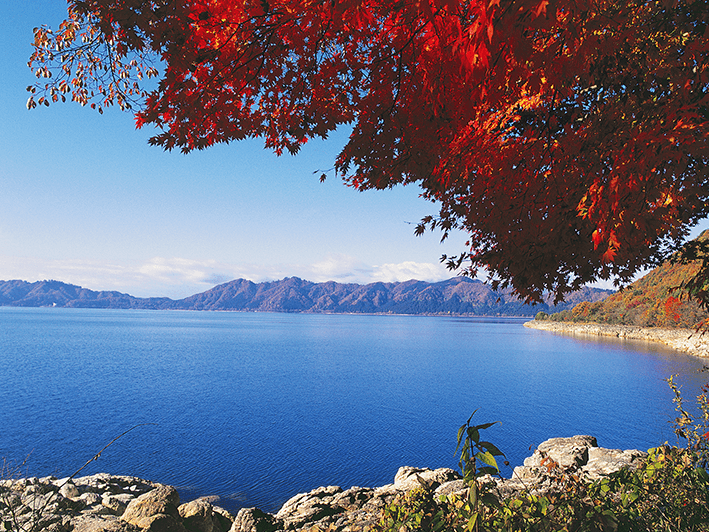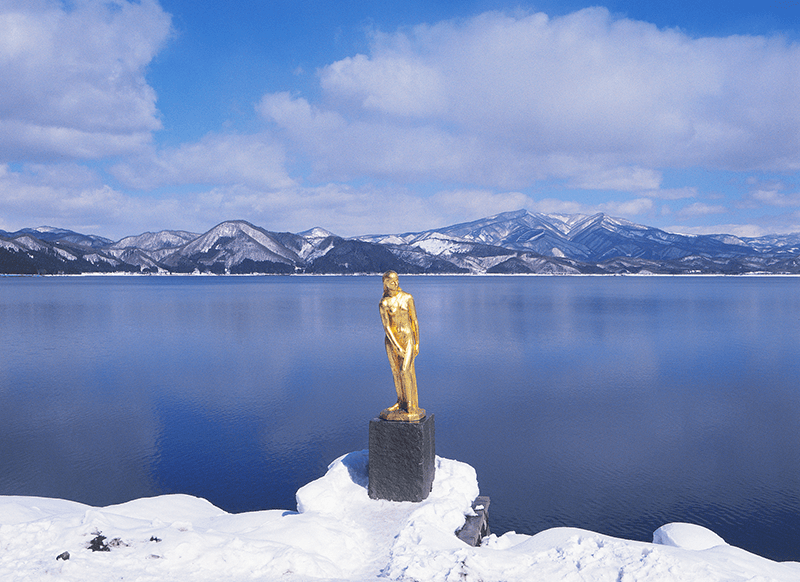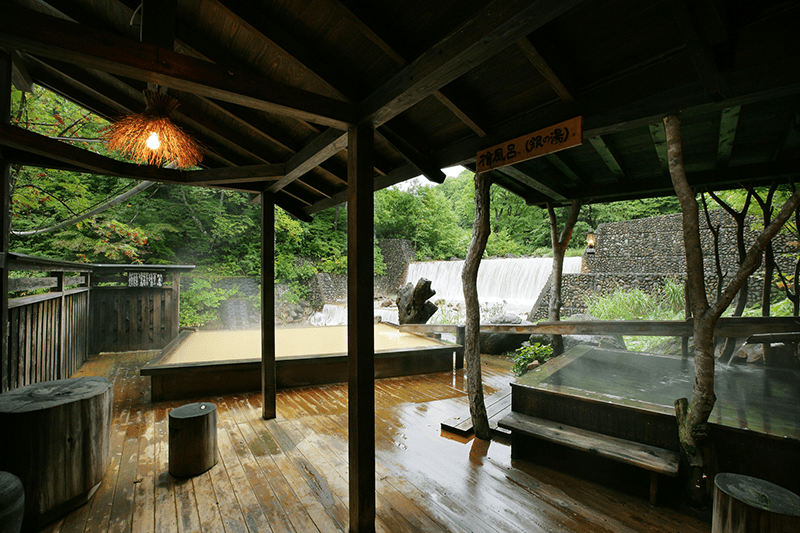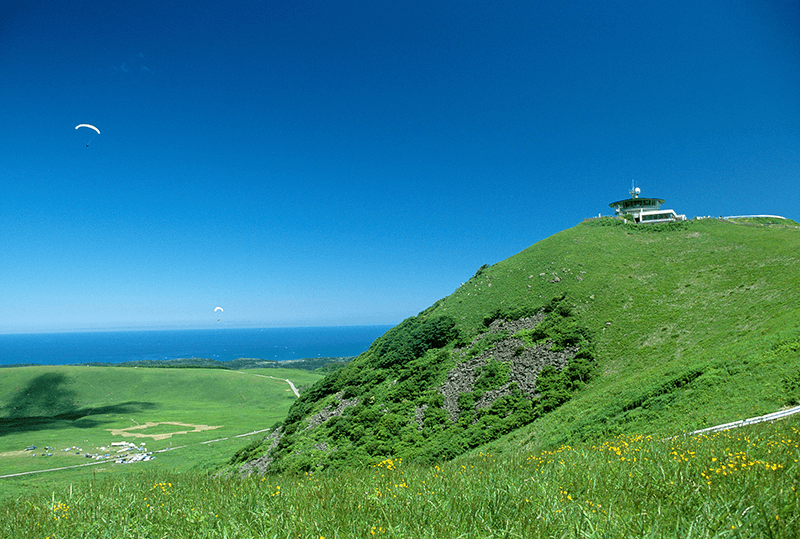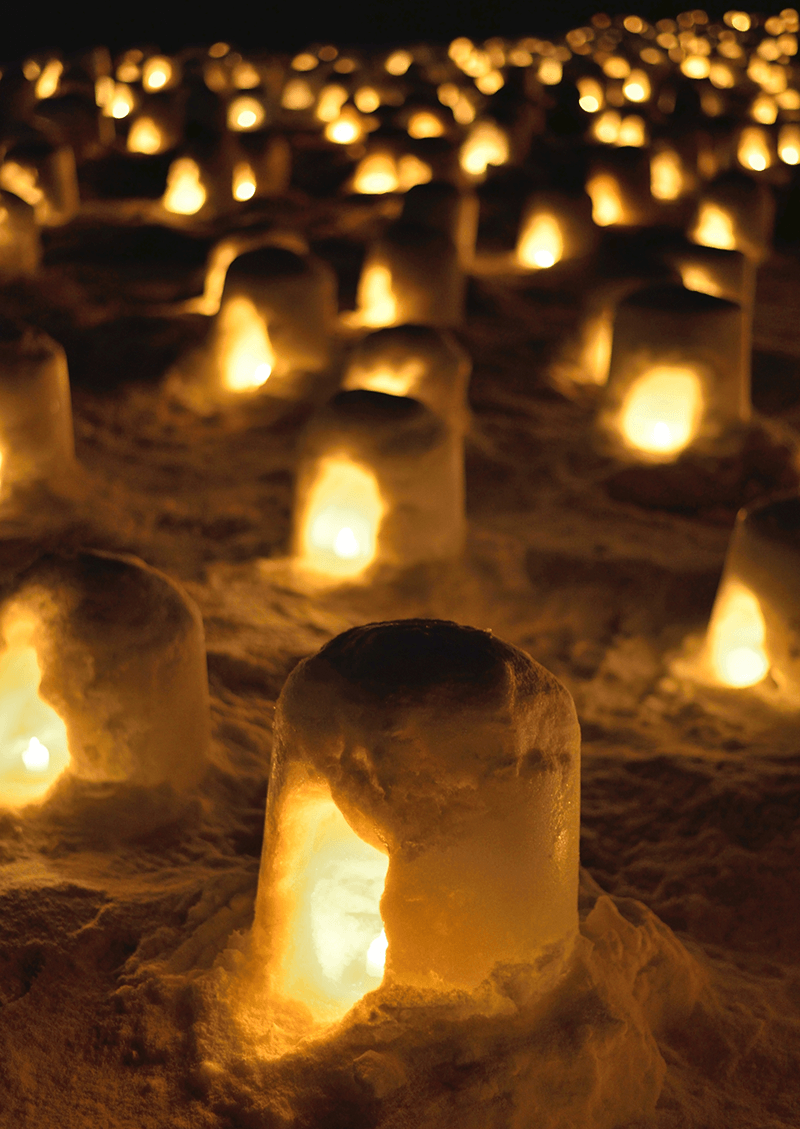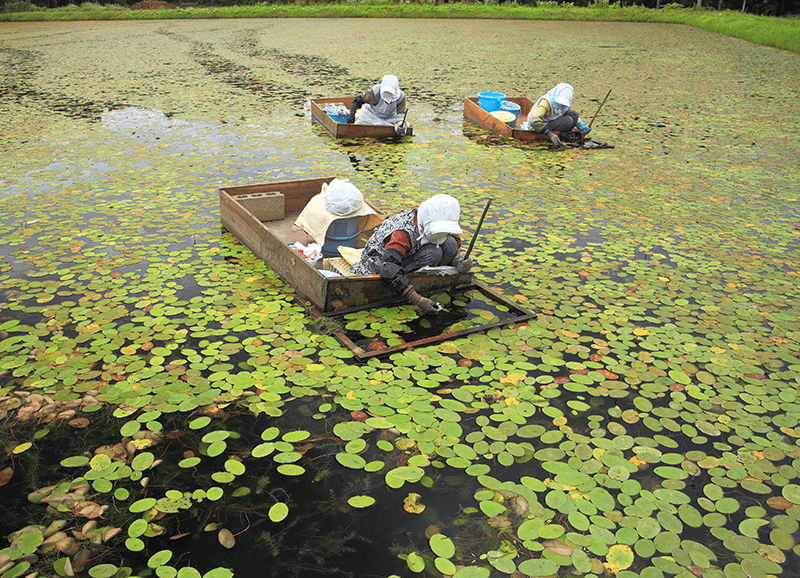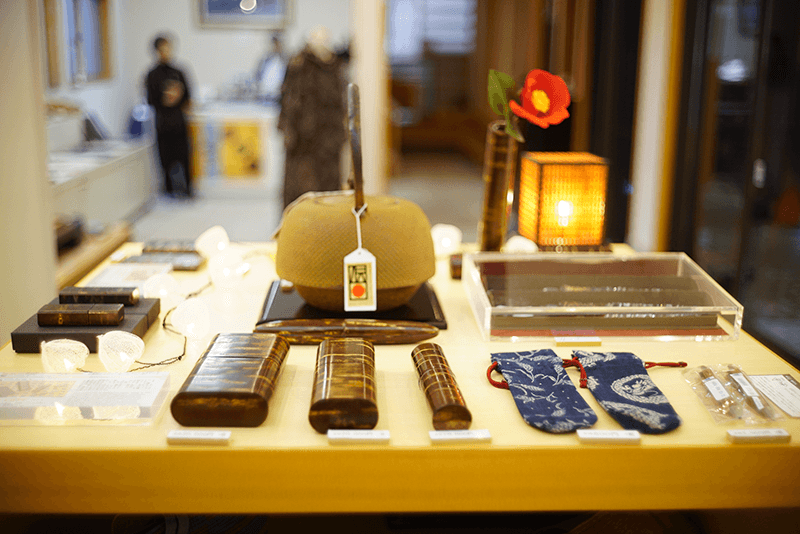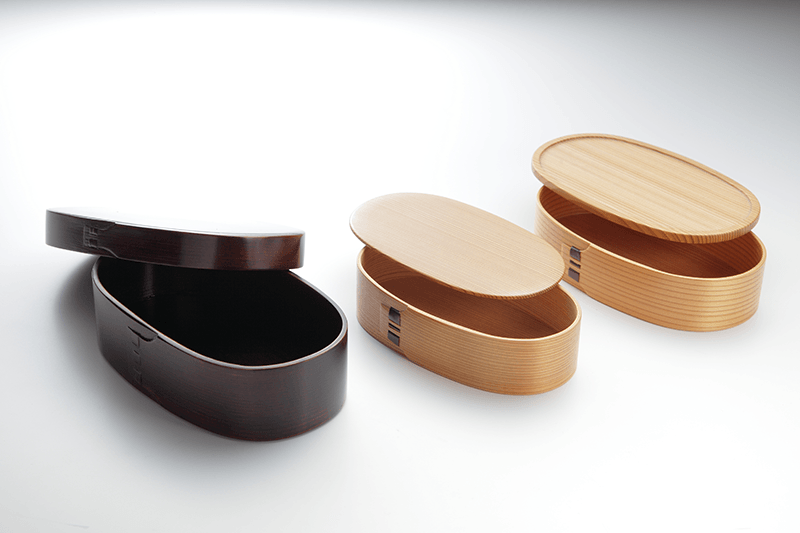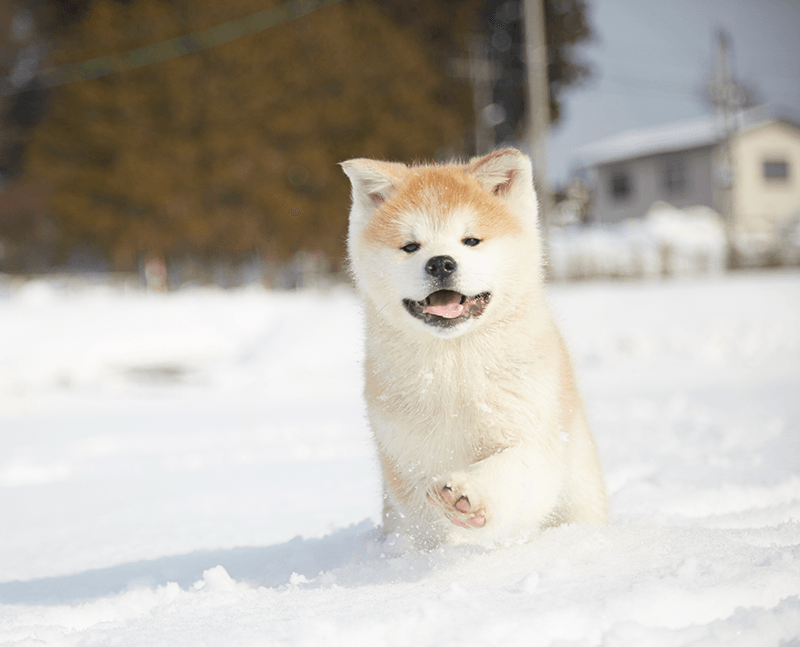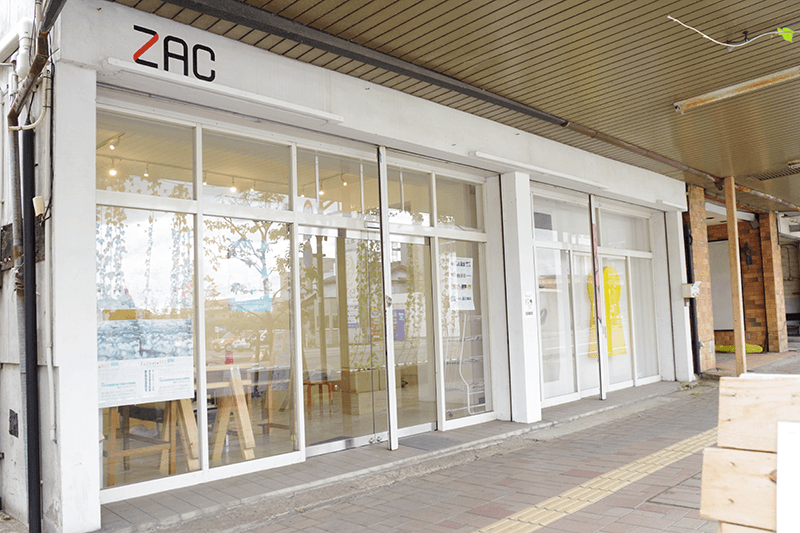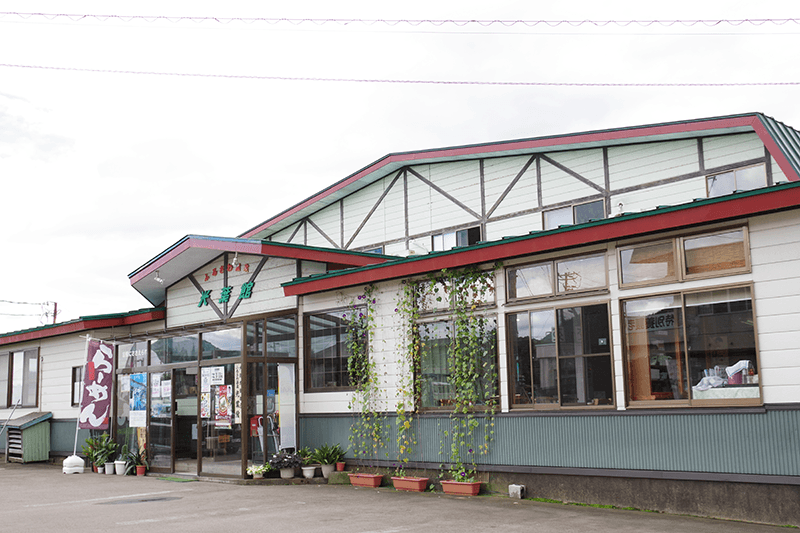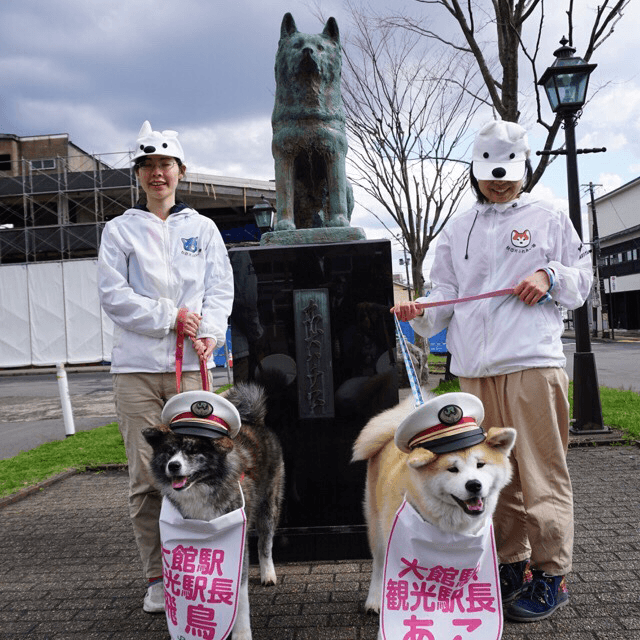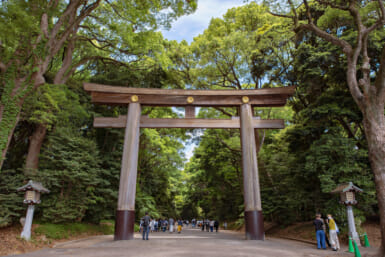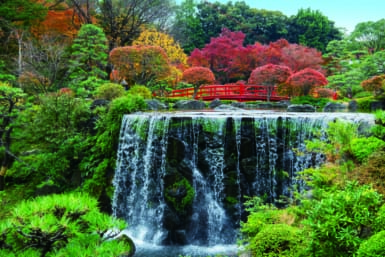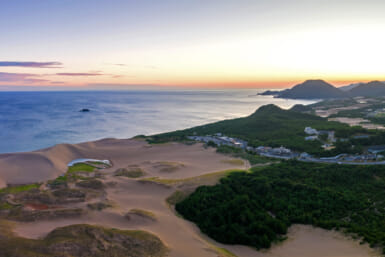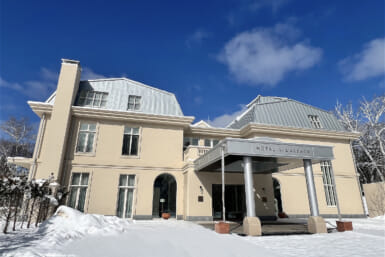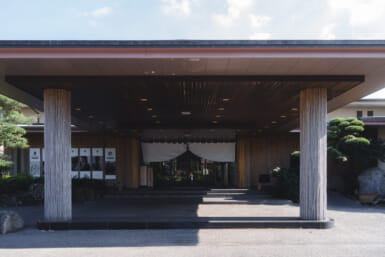In this five-part series, we take you on a journey through Akita using sight, sound, smell, touch, and taste to provide top tips on things to experience while you’re there.
We kicked off our guide with the senses of sight, sound, and smell, and now our multi-sense tour of Akita continues with the sense of touch.
Words by Matt Schley and Alec Jordan
Feel at One with Water as You Kayak (or Canoe) Japan’s Deepest Lake
Want to get touchy-feely with some fresh water? Make your way to Tazawako, which is, at 423 meters in depth, Japan’s deepest lake. From April to November, you can take a kayak or canoe tour onto Tazawako’s gentle waters, which is so clear you can see up to eight meters down. With English-speaking guides offering instruction, the tour is perfect for first-timers and pros alike. There are multiple tours throughout the day, but we recommend the sunset course, which is pretty much as breathtaking as it sounds.
Get a Good Hot Spring Soak
While kayaking on Tazawako allows you to get close to water, here’s a chance to get in it. Not far from the lake lies Nyuto Onsen village, a volcanic hot spring area that’s been attracting visitors for over 300 years. The area has seven Japanese inns, all with their own baths. We’re fans of Taenoyu, which, aside from multi-course dishes featuring local Akita specialties and baths with a variety of temperatures and healing properties, has its very own waterfall, which you can view from both the mixed gender and private baths. It’s a wonder we ever came home.
Feel the Wind in Your Face as You Paraglide at Mt. Kanpu
With an altitude of 355 meters, Mt. Kanpu, on the peninsula of Oga, isn’t exactly Mt. Fuji – but only one of those mountains offers paragliding. To get your head in the clouds, visit Kanpu Paragliding School, where even beginners can take flight (strapped in safely in tandem with an instructor, natch) and see Akita from a brand-new perspective.
Huddle in a Hut Made of Snow in Yokote
Akita experiences some of Japan’s snowiest winters, and Yokote, in the southeast, can get as many as 30 centimeters in a single night. The city has embraced its position as Akita’s snow capital with the Yokote Kamakura Festival, which features small, igloo-like huts made of snow and called kamakura. Guests move back and forth between these huts eating mochi rice cakes and sipping on sweet rice wine while huddling around the fire with the locals. The February festival, which has been going for 450 years, also features snow sculptures, access to Yokote Castle, and hundreds of mini-kamakura, which look truly stunning when lit by candles at night.
Get Your Hands on the Slimy Delicacy Known as Junsai
If you’re looking for a truly unique Akita experience, junsai harvesting may be just the thing. To farm these perennial water plants, sometimes referred to as “emeralds of the water,” one must board a tiny, box-shaped boat, float out into the middle of a pond, and pick the slippery, slimy buds one by one. Your treat at the end of a successful hunt is, of course, a meal of delicious and polyphenol-rich junsai, which can be eaten fresh or added to hotpot dishes, soups and even fried as tempura.
Get in Touch with the Cherry Trees in Kakunodate
Kakunodate, Akita’s “little Kyoto,” is known both for its rows of former samurai residences and its woodwork, called kabazaiku, in which master craftspeople create tea canisters and other containers from cherry tree bark. To see what this unique artform is all about, check out arts and crafts shop Kazuki. Kabazaiku is traditionally used to create old-school containers for tea and tobacco, but Kazuki also features playful, modern takes on the form like pen cases and USB sticks. Next, make your way down the street to Kakunodate’s red brick Denshokan Museum, where you can see kabazaiku masters working before your very eyes.
Celebrate the Feeling of Quality
Odate’s most celebrated craft dates back centuries before the birth of the city’s most famous son. Magewappa is a traditional form of wood turning in which pieces of cedar are bent into oval or cylindrical shapes that are used as everything from bento boxes to serving trays and drinking vessels. The quality craftsmanship, which you can feel as you run your fingers across a finely made piece, is a testament to the skill of the first practitioners of this craft – 17th century samurai – and modern day magewappa makers are proud to carry on the city’s artisanal tradition.
Come into Contact with the Pups of Odate
Did you know that Japan’s most famous dog, Hachiko, was born in Odate in 1923? Today the city has a strong feeling of pride about its connection to this celebrated canine – as well as a few other famous dogs around town. Here are a few ways to get in touch with the pups of Odate…
1. Pay Homage to the Hometown Hero
The story of Hachiko is one of the most touching tales of animal loyalty in the world. After the death of his master in 1925, the Akita Inu would wait day after day at Shibuya Station for the train that his master used to take, for more than nine years. He would eventually be memorialized with a famous statue in Shibuya, a Hollywood movie, and in many other ways.
2. Visit the Akita Inu Museum
Founded in honor of the 50th anniversary of the establishment of the Akita Dog Preservation Society, the Akita Inu Museum is a testament to the love that the breed has inspired. The museum is rich in history about the Akita, which actually neared extinction during the middle of the 20th century, but was brought back thanks to the efforts of the Akita Dog Preservation Society and other breeders. During the warmer months of the year, visitors can meet an Akita near the entrance to the building. A companion statue to the well-known Shibuya Hachiko stands at the front of the museum.
3. Meet a Cultured Canine
The Zerodate Art Center is a thriving cultural hub for the city of Odate, and hosts artistic exhibitions, workshops, and other events where city residents of all ages gather together. But there’s no way it would be a true Odate institution if an Akita weren’t involved. Nono, the official dog of the Zerodate Art Center, plays an important role at the center, keeping spirits up whether she’s making her way around the halls of the building or getting people animated at public events. Like some of Odate’s other well-known Akitas, Nono has something of a social media presence.
4. Feel the Warm Welcome
The centrally located Furusawa Onsen Resort is known for its friendly service, its spacious onsen, and its hearty, home-cooked food. It’s also known for Haru, the Akita Inu that calls the hotel home. She’s all part of the omotenashi – or traditional Japanese hospitality – at the accommodation, and judging from some of the reviews, she’s one of the reasons some guests have chosen to stay there! For these dog-loving travelers, the feeling that guests get when they meet Haru is said to be just as warm as the embrace of Furusawa Onsen’s waters.
5. Be Greeted by a Dynamic Duo
Just like Hachiko, who waited to greet his master Hidesaburo Ueno every day, there are a pair of Akita Inu who are poised to say hello to people who get off at Odate Station. Ako and Asuka are sisters, and their job – which they’re quite good at – is to boost the city’s social media presence. They’ve got their own Tumblr page (odate-akita-dog.tumblr.com/), and when they’re not doing photo shoots or helping to raise the profile of their home town, the friendly sisters can be found in their pens across from the station, happily greeting locals as well as visitors from out of town.
If you’re looking for even more things to do and see in Akita, visit the prefecture’s official website at www.akitafan.com/en

